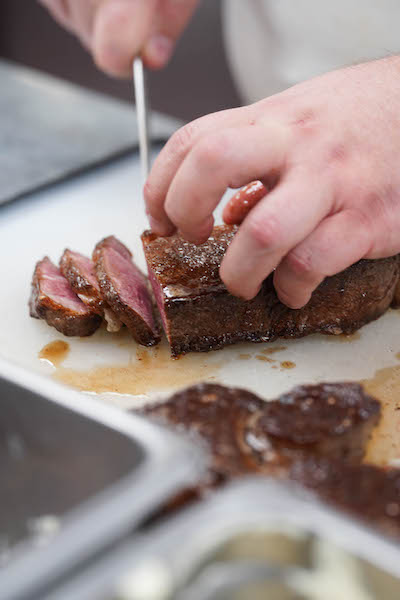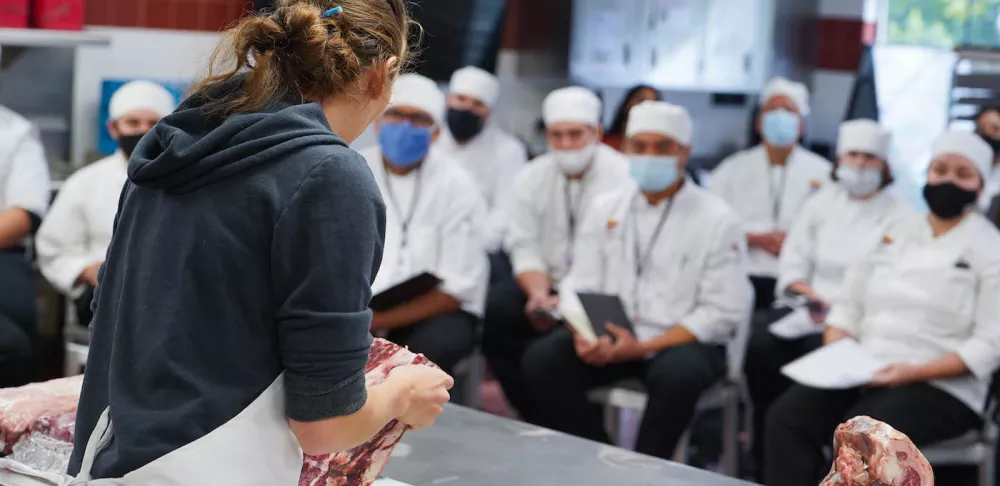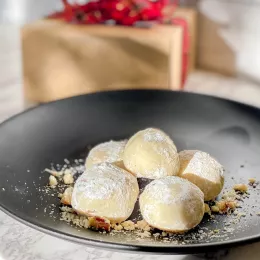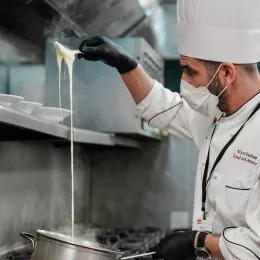Katie Flannery shares how her family business produces top-notch, dry-aged beef products for celebrity chefs and home cooks alike.
Butchery runs through the Flannery bloodline. Third-generation butcher, Katie Flannery, has continued the family legacy and is considered by her peers to be a “rare breed” in the industry.
“My grandfather started in butchery as a janitor in a butcher shop. He rose through the ranks to end up owning the company he was working at. The store he started still exists in San Francisco today and is run by my two uncles.”
Around 2000, Katie’s father, Bryan Flannery, began his own company focusing on Holstein dry-aged beef. The father-daughter duo now has grown their business to supply top chefs across the West, such as David Kinch, Nancy Silverton, Richard Blais and David Chang, to name a few.
Headquartered in Northern California’s San Rafael, Katie works with clients directly for custom cuts, runs the dry-aging program and manages the online retail arm to make their products available nationwide. At the forefront of Flannery Beef’s operations, Katie prides herself in their rapidly growing business and builds awareness of their dry-aging of the Holstein steer variety.
Katie recently shared this and much more during a live lecture and demo at ICE’s Los Angeles campus. Watch the reel below to learn more about costing, yields and selecting the best product for your own business or consumption.
Why Flannery Beef uses Holstein versus Angus cattle?
“Probably the most common and known [breed] in the United States is Angus. What makes Angus so good in the beef industry is that it matures the quickest, and, if fed a good diet, will put on really good marbling and has really good muscle mass.” Additionally, “the yield will make you the most money,” she says.
However, Flannery Beef diverged from the norms and became somewhat of an anomaly within the industry, focusing on Holstein for their dry-aged products instead.
“Eighty-five percent of all dairy produced in the United States comes from Holstein cows. They’re good at their job. The funny thing about the dairy industry — and it’s kind of an inconvenient truth — is that the biggest byproduct of the dairy industry is the male Holstein.”
“If you have a dairy farm, your animals need to keep producing calves in order to keep producing milk. If you have a female calf, that’s great — you just grew your herd. But, if you have a male calf, you have no use for this animal.”
“The industry has come to this question of what do we do with male Holsteins?”

“My dad, our whole company and I are absolutely in love with the Holstein breed, not only because you’re finding a home for something that otherwise is pushed aside from the industry, but [also] because of the quality.”
“When you start looking at high-end, high-quality, prime steaks, Holstein has the ability to marble beyond belief.”
So, why dry age beef?

“There are natural enzymes within the meat that are aerobic. They need oxygen to survive.” Once the beef interacts with the air, it starts to break down the molecular bonds of the meat because of these living organisms. This results in tender and extremely flavorful beef.
“In a nutshell, dry aging is a controlled decay process. You’re letting these enzymes break down the muscle. The main control on dry aging is going to be temperature. Temperature is absolutely key,” Katie explains.
So why dry age? Flannery Beef explains it as, “the longer you dry age beef, the more pronounced the flavor is. A good analogy for any of you who enjoy cooking is to think of what happens when you turn a stock into a demi. As the moisture evaporates, the flavor concentrates.”




